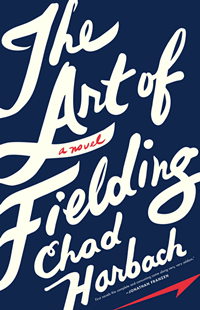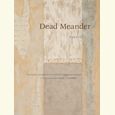Extra Innings
Chad Harbach’s first novel creates an engrossing world within—and without—the baseball diamond
In the final days of regular season play last week, the post-season dreams of several major-league baseball teams turned, as always, upon sudden explosions. There were good explosions, like that of Tampa Bay, which rallied against the Yankees when pinch-hitter Dan Johnson managed to blast a crucial home run in the ninth inning. Then there were bad explosions, as when Red Sox fielder Carl Crawford missed a catch that allowed Baltimore to finish 4-3 over a team that had been nine games ahead just a few weeks earlier. At its best, baseball is like that: a long, intense wait, punctuated by explosive moments when fortunes are reversed by a single throw, hit, or catch. The Art of Fielding by first-time novelist Chad Harbach is like that, too. At over 500 pages, it contains a few slow innings, which nonetheless carry the reader to moments of intensity that are nothing short of magnificent.
The protagonist, Henry Skrimshander, is a gifted shortstop. A scrawny kid of conservative Midwestern upbringing, Henry is recruited to play for Westish, “a slightly decrepit liberal arts school on the western shore of Lake Michigan.” (The college is so quaintly old-fashioned that it seems jarring, almost an anachronism, whenever Harbach depicts a student with a cell phone or iPod.) The school’s baseball team is the Harpooners, named after a brief visit Herman Melville made to the campus in his sixties. The captain of the Harpooners, a strapping lad named Mike Schwartz, is everything Henry is not: muscular, confident, full of grand schemes and plans. Henry is quiet as a Zen monk; his koans are contained within a dog-eared book that lends the novel its title, The Art of Fielding, by a legendary (if fictional) shortstop named Aparicio Rodriguez. (Tip Number 26 is representative: “The shortstop is a source of stillness at the center of the defense. He projects this stillness and his teammates respond.”)
 Predictably, Schwartz becomes Henry’s mentor, and here the novel might devolve into a typical coming-of-age sports story, but Harbach, a Harvard grad and co-founder of the hip literary journal n+1, is far too gifted a writer to allow that to happen. Instead, he surrounds Henry with fresh, appealing characters who steer the plot firmly away from sports clichés. There’s Henry’s brilliant, beautiful, oh-so-gay roommate Owen; there’s the urbane college president, the delightfully named Guert Affenlight, who is trying to reconcile with his estranged daughter while also reconciling with the fact that he has fallen madly in love with Owen; there’s the daughter, Pella, who runs away from a failing marriage to the college, where she falls for Henry’s mentor, Schwartz; and then there is Schwartz himself, who has always succeeded at everything but can’t seem to get into law school, and cannot fathom a life in which his plans don’t reach fruition. Like a 6-4-3 double play, the plot fires from each to each with geometric precision. One could as easily call this book a novel of modern romance, or a novel of college life, as a baseball novel—and yet baseball is the anchor that holds the multiple storylines together. Baseball is the stillness at its center.
Predictably, Schwartz becomes Henry’s mentor, and here the novel might devolve into a typical coming-of-age sports story, but Harbach, a Harvard grad and co-founder of the hip literary journal n+1, is far too gifted a writer to allow that to happen. Instead, he surrounds Henry with fresh, appealing characters who steer the plot firmly away from sports clichés. There’s Henry’s brilliant, beautiful, oh-so-gay roommate Owen; there’s the urbane college president, the delightfully named Guert Affenlight, who is trying to reconcile with his estranged daughter while also reconciling with the fact that he has fallen madly in love with Owen; there’s the daughter, Pella, who runs away from a failing marriage to the college, where she falls for Henry’s mentor, Schwartz; and then there is Schwartz himself, who has always succeeded at everything but can’t seem to get into law school, and cannot fathom a life in which his plans don’t reach fruition. Like a 6-4-3 double play, the plot fires from each to each with geometric precision. One could as easily call this book a novel of modern romance, or a novel of college life, as a baseball novel—and yet baseball is the anchor that holds the multiple storylines together. Baseball is the stillness at its center.
Amid the whirlwind of emotions from his friends, the outwardly nonplussed Henry begins to lose his calm, even as sports agents are calling him about his draft potential, dangling before him an incomprehensible future salary. During this maelstrom, Henry develops what is sometimes known as “Steve Blass Disease”—a sudden, unpredictable inability to throw straight, as horrifying to fans as it is to the afflicted player. Harbach has described this painful condition as the genesis of the novel, an idea that grew after he witnessed a similar meltdown by closing pitcher Mark Wohlers at a Brewers game in the 1990s. “Everyone is just kind of aghast because you can just see how bad it is for this guy,” Harbach told GQ in a recent interview. “There are a lot of emotions in sports, but very rarely do you see that kind of emotion at that level.”
 Among those most affected by Henry’s inexplicable meltdown are his teammates, not so much because he is costing them games (in fact, the team actually continues to do quite well), but because they all depend vicariously upon his future career. With heartbreaking accuracy, Harbach captures their unspoken hopes during a long ride to Opentoe, Illinois, for an away game: “Every guy on that bus, from Schwartz down to little Loondorf, had grown up dreaming of becoming a professional athlete. Even when you realized you’d never make it, you didn’t relinquish the dream, not deep down. And here was Henry, living it out. He alone was headed where they each, in the privacy of their backyard imaginations, had spent the better part of their boyhoods: a major-league diamond.”
Among those most affected by Henry’s inexplicable meltdown are his teammates, not so much because he is costing them games (in fact, the team actually continues to do quite well), but because they all depend vicariously upon his future career. With heartbreaking accuracy, Harbach captures their unspoken hopes during a long ride to Opentoe, Illinois, for an away game: “Every guy on that bus, from Schwartz down to little Loondorf, had grown up dreaming of becoming a professional athlete. Even when you realized you’d never make it, you didn’t relinquish the dream, not deep down. And here was Henry, living it out. He alone was headed where they each, in the privacy of their backyard imaginations, had spent the better part of their boyhoods: a major-league diamond.”
As the season grinds on, Henry’s existential crisis—and by extension, his team’s—parallels those suffered by the book’s other major characters, building toward a climax as surprising and satisfying as the wildest of postseason play. Like Bernard Malamud and W.P. Kinsella before him, Chad Harbach has reinvented the national pastime within a universe of his own creation, a place that is not quite the world as it we know it, but a world as it might exist within the infinite lines stretching outward from home through first and third base. The Art of Fielding is the best baseball novel to suit up in many years.
Chad Harbach will appear at the 2011 Southern Festival of Books, held October 14-16 in Nashville. All events are free and open to the public.


